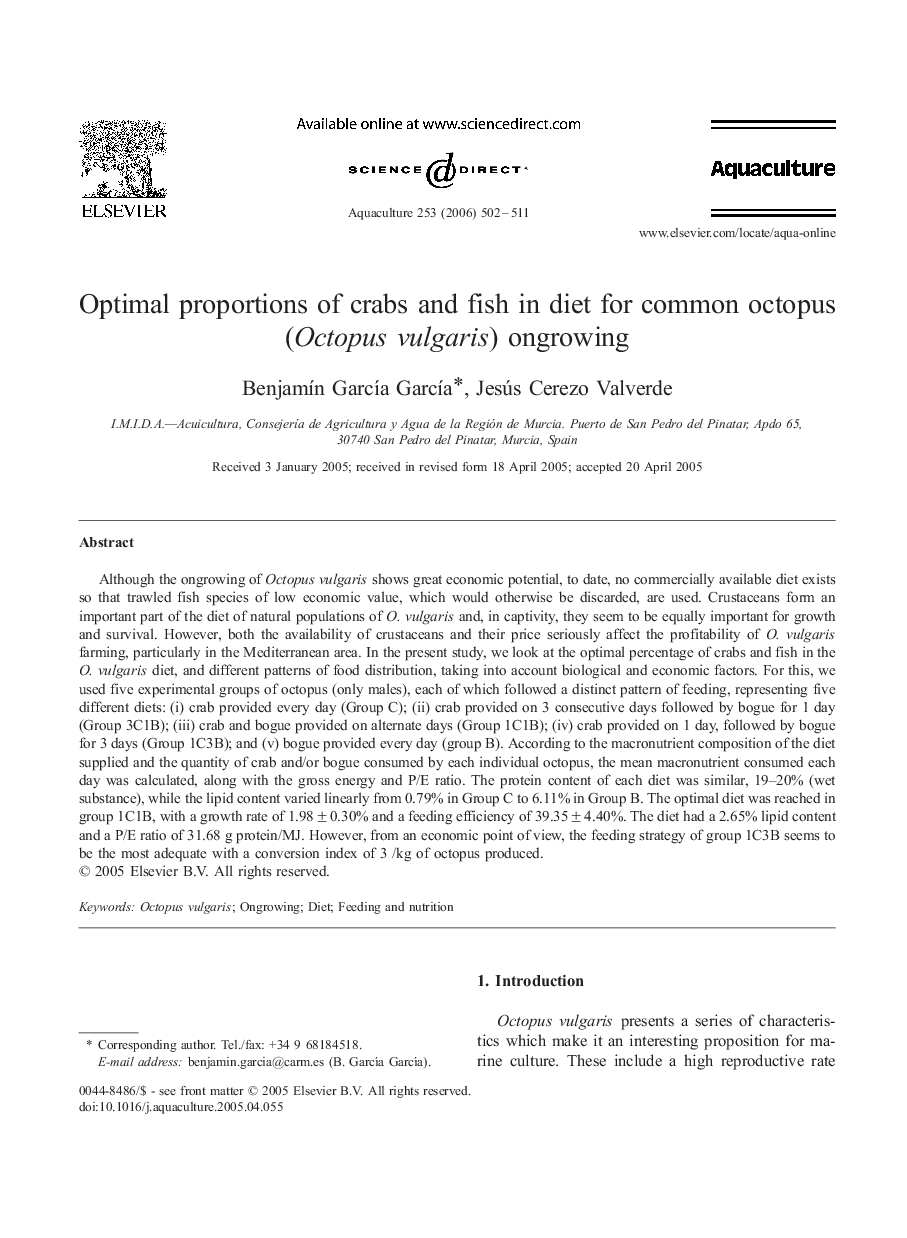| Article ID | Journal | Published Year | Pages | File Type |
|---|---|---|---|---|
| 2426256 | Aquaculture | 2006 | 10 Pages |
Although the ongrowing of Octopus vulgaris shows great economic potential, to date, no commercially available diet exists so that trawled fish species of low economic value, which would otherwise be discarded, are used. Crustaceans form an important part of the diet of natural populations of O. vulgaris and, in captivity, they seem to be equally important for growth and survival. However, both the availability of crustaceans and their price seriously affect the profitability of O. vulgaris farming, particularly in the Mediterranean area. In the present study, we look at the optimal percentage of crabs and fish in the O. vulgaris diet, and different patterns of food distribution, taking into account biological and economic factors. For this, we used five experimental groups of octopus (only males), each of which followed a distinct pattern of feeding, representing five different diets: (i) crab provided every day (Group C); (ii) crab provided on 3 consecutive days followed by bogue for 1 day (Group 3C1B); (iii) crab and bogue provided on alternate days (Group 1C1B); (iv) crab provided on 1 day, followed by bogue for 3 days (Group 1C3B); and (v) bogue provided every day (group B). According to the macronutrient composition of the diet supplied and the quantity of crab and/or bogue consumed by each individual octopus, the mean macronutrient consumed each day was calculated, along with the gross energy and P/E ratio. The protein content of each diet was similar, 19–20% (wet substance), while the lipid content varied linearly from 0.79% in Group C to 6.11% in Group B. The optimal diet was reached in group 1C1B, with a growth rate of 1.98 ± 0.30% and a feeding efficiency of 39.35 ± 4.40%. The diet had a 2.65% lipid content and a P/E ratio of 31.68 g protein/MJ. However, from an economic point of view, the feeding strategy of group 1C3B seems to be the most adequate with a conversion index of 3 €/kg of octopus produced.
